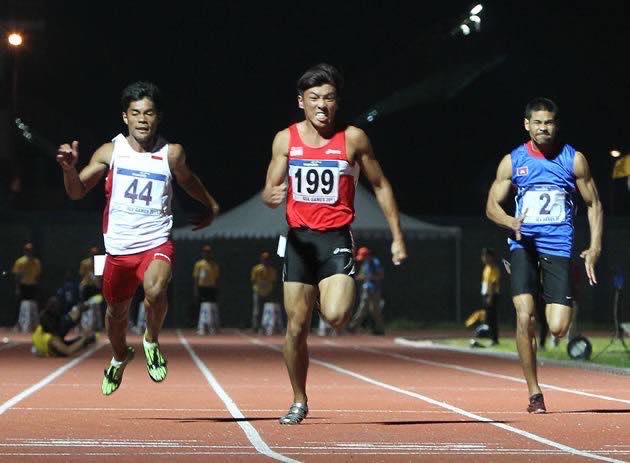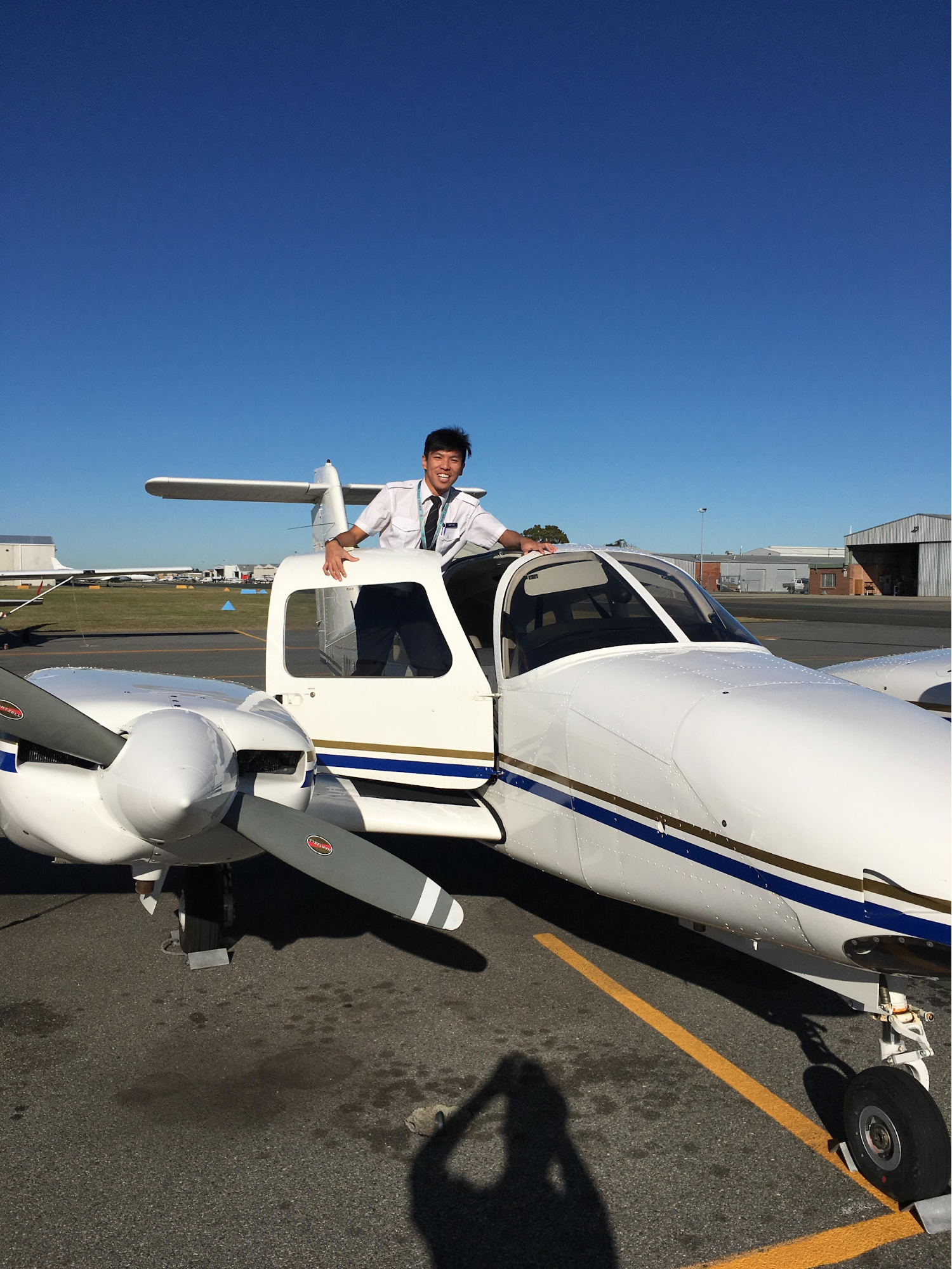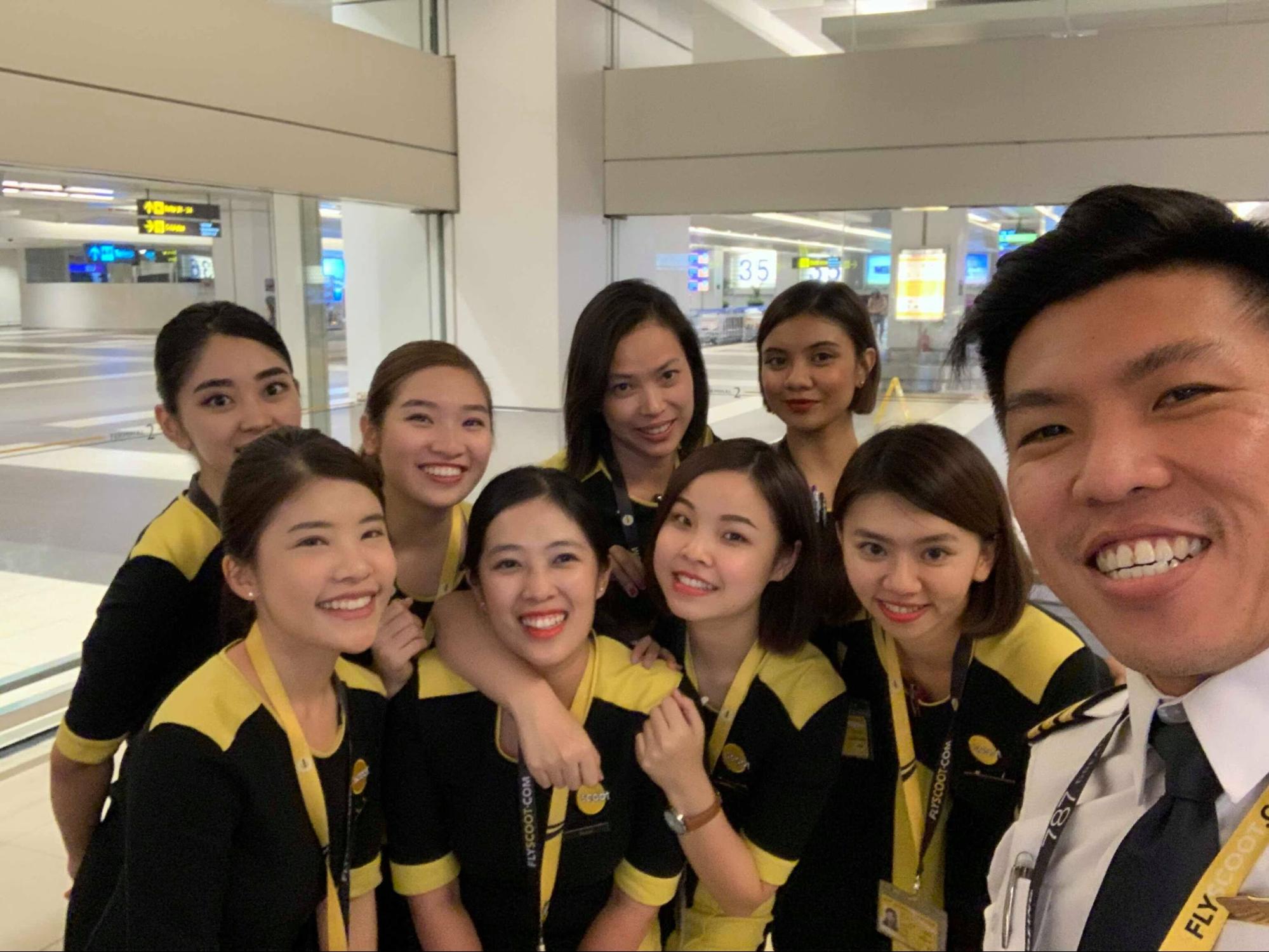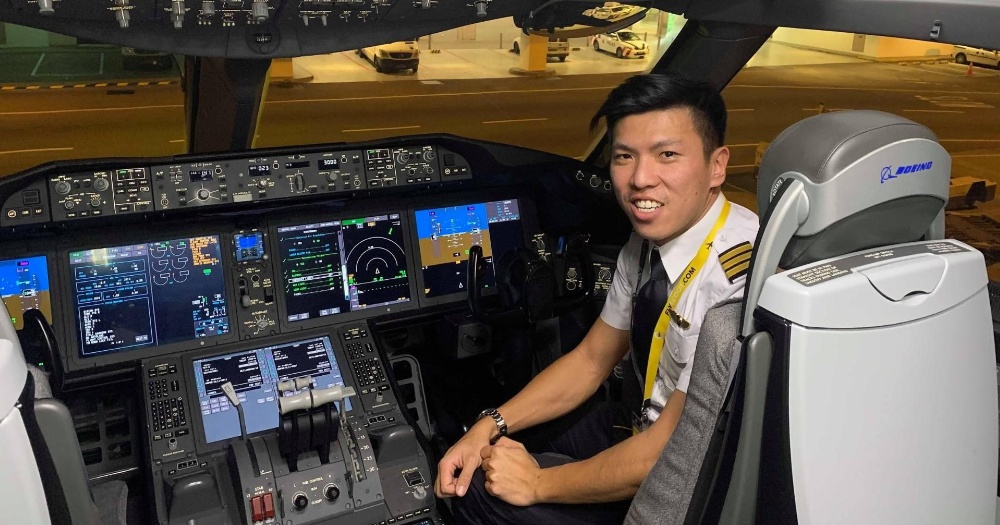In 2012, Singaporean track & field athlete Gary Yeo sprinted to a finish at the London Olympics.
But after representing Singapore in more than 40 sports meets, the former athlete decided to hang up his spikes at the age of 29, after his final competition at the 2015 SEA Games, and take a leap of faith to move on to the next phase in his life.
As a pilot.
We sat down with the 33-year-old as he shared how he went from representing Singapore at the Olympics to signing up to be a pilot cadet in 2015, and then eventually becoming a first officer in Scoot in 2018.
“Why didn’t you try to be a coach?”
This was one of the first questions I asked Yeo when I first met him.
To me, it made logical sense. If you have been running for more than a decade, and have competed at the highest level on so many occasions, why wouldn’t you want to stay in your comfort zone, and pursue a career in the same industry?
It turns out the idea that professional athletes would always go on to become coaches or PE teachers after their competitive stint was a very real stereotype.
“I’m not someone who likes to fit into the mould. And like you said, I’ve been doing it for so long, day in, day out, that sometimes I really want a new challenge to start all over again,” said Yeo.
 Yeo at the 2011 SEA Games, held in Palembang, Indonesia.
Yeo at the 2011 SEA Games, held in Palembang, Indonesia.
Yeo, as I would later learn from our conversation, is constantly looking out for new challenges rather than remaining comfortable.
Note to my lazy self: This is the mindset of a true champion.
As an aviation enthusiast, I also asked Yeo a burning question.
“So...If I want to quit my job and be a pilot, what qualities do I need?”
If you’re worried about not making the cut because of academic qualifications, it turns out that you don’t need to be a Physics genius be a pilot.
Although Yeo confessed that he had little Physics background, he was able to make it through his pilot training due to his determination.
Yeo also credited his background as an athlete for providing him with the drive necessary to be a pilot.
He said that flying comprises a lot of mental preparation and visualisation, not unlike what is necessary to be an accomplished athlete.
“We train for the race, then we have a plan to execute the race. We also train for the flight, then we have the knowledge to plan for the flight and execute it,” said Yeo.
Being a pilot also meant that Yeo could not rest on his laurels, a concept that Yeo, as a sportsman, was no stranger to.
“You always seek to improve yourself after every flight. In fact, you seek to improve yourself even if there’s no flight,” he said.
Ok, fine, you don’t need to be a coach. But why be a pilot?
Apparently, it all started in 2015, when Yeo’s track & field senior, who became a flight instructor, took him up into the air. This sparked his love with being thousands of feet above ground.
It was a happy coincidence that Scoot began hiring more pilots during that time, after taking delivery of their Boeing 787 Dreamliners.
The stars aligned for Yeo, who made the decision to stop competitive running and to join Scoot as a pilot cadet. But the road to being a pilot was not paved without obstacles.
For many occupations in Singapore, the path to land that job is pretty clear.
If you want to be a doctor, you go to medical school. Being an engineer more your thing? Go to engineering school.
But what happens when one wants to be a pilot? Turns out you have to go to pilot school as well.
For Yeo, his first challenge to becoming a pilot came from an unexpected source: the immense amount of studying required.
The first stage of training for pilot cadets involved ground school, which according to Yeo, meant studying for 14 subjects in the span of six months.
Yeo, who is a university graduate, admitted that he had “never studied so much before in (his) life”.
“When I was an athlete, my focus was on running more than studies. But with flying, it was all studying, and it was a big transition,” said Yeo.
Fortunately for Yeo, he said that although the process was a challenge, he was never in it alone.
The other pilot cadets in his cohort of 24 were always keen to help one another, and they spent a lot of time discussing the exam questions to ensure that everyone would pass.
When asked whether everyone passed and made it to the next stage, Yeo replied that it was indeed the case.
Were you nervous during your first flight? I sure would be.
The next phase of the training took place in Jandakot Airport, near Perth.
Yeo said that training began in a single-engine Cessna-172, and gradually progressed to a dual-engine Seminole plane.
 Yeo and the Seminole training aircraft.
Yeo and the Seminole training aircraft.
While I assumed that he would feel nervous during his first flight, Yeo surprised me by saying that instead of being nervous, he was actually extremely excited.
He explained that between the love for flying and six months of ground school, most cadet pilots face their first flight with great anticipation.
“You can’t wait to do it; I don’t think there’s a lot of nervousness. I think there’s a lot of excitement and anticipation,” said Yeo.
What about your first official flight? Were you excited as well?
Yeo remembered his first official flight fondly.
It was a training flight to Nanjing, and there were three pilots inside the flight deck, including himself.
“That first flight was an eye-opener; from the flight planning stage, where we got the flight plan and we translate it into a feasible and actual flight for the passengers (operationally), and then to make it to the destination and back,” Yeo reminisced.
“The 14 subjects that we took finally came into perspective.”
How do pilots prepare for a flight?
A pilot’s job begins before he or she receives the flight plan.
In fact, Yeo begins planning for the flight while he is commuting to work.
“We look at the weather, the clouds in the sky; which direction other aircrafts are taking off, we have to pay attention. And the timing, what time do we take off, and roughly how much traffic to expect. And we look at the weather enroute, in order to check for turbulence that we may need to avoid,” said Yeo.
Pilots report for work around an hour before the flight, where they will brief the rest of the cabin crew on what to expect, so they can plan their service and how to make the flight more enjoyable for passengers.
“Because even though in the eyes of the public, the pilot is always judged by the landing or take-off, in fact it’s a lot more factors that we need to take note of,” said Yeo.
Do all your flights go smoothly?
Yeo’s most memorable flight was one that involved a medical emergency onboard. Due to many external factors, not every flight would be smooth sailing.
The situation was tricky: All the doors were closed, the aircraft was already pushed back, and the pilots were already taxi-ing to the runway.
Enroute, to the runway, they were informed by the crew that a passenger was fading in and out of consciousness.
As the pilots, they had to make the decision whether to go back to the gate, or continue to fly.
“Once the doors are closed, it’s up to the captain, and the First Officer, to support him through the whole process. And the decision we made was to turn back to the gate, and seek medical help for the passengers,” said Yeo.
After they returned to the gate, the passenger was revealed to be running a fever, and was advised by the medical crew not to continue with the flight.
His family disembarked with him, and after that, the flight continued as per normal.
These situations may be unforeseen, but a pilot like Yeo is well equipped by his training to deal with them, while ensuring that the other passengers would be minimally impacted.
Is it fun to work at Scoot? What’s this Scootitude thing I keep hearing about?
When asked what it’s like to be part of the Scoot team, Yeo mentioned the airline’s trademarked “scootitude”, which he says helps the airline stand out from others.
“Scootitude” basically refers to a young-at-heart attitude, a spirit of outdoing oneself and always ready to spontaneously seek out new experiences.
One such example of this would be how the airline’s crew members, affectionately named “Scootees”, love to engage with their customers, especially children. (Once, Yeo recalled that the cabin crew had a drawing contest for the kids on the flight, with the best drawing being determined by the crew. Fun times.)
When asked what typical pilot conversations are like, Yeo said that it revolves mainly around sharing their experiences on different flights, new destinations and airports, and where they are flying next.
 Yeo and the Scootees after a flight.
Yeo and the Scootees after a flight.
“Everyone knows each other and everyone is comfortable,” said Yeo.
Despite Scoot’s fun image, however, Yeo assured me that safety will always remain Scoot’s top priority.
“At the flight deck, it all stops there, because it’s all serious business. There is no deviation in terms of procedure and operations, whereas in the cabin side, that’s where we try to make it an enjoyable experience for passengers,” said Yeo.
When asked what are his plans for the future, Yeo had a simple goal: to be a Captain.
“I think with every second or first officer, the immediate thinking is to better your experience and knowledge, in the hope of achieving command and becoming a Captain.”
This sponsored post by Scoot made our writer want to quit his job and become a pilot.
Top image from Gary Yeo.
If you like what you read, follow us on Facebook, Instagram, Twitter and Telegram to get the latest updates.
